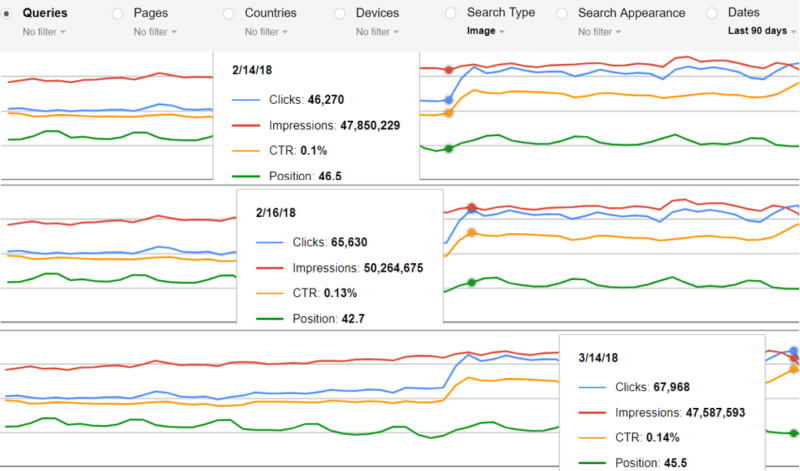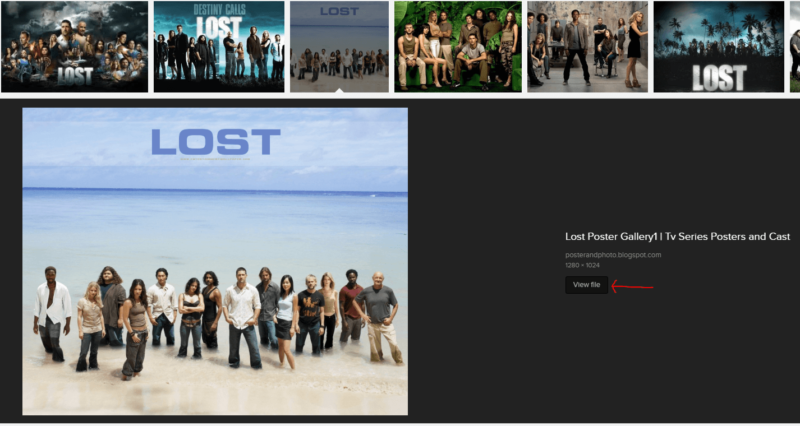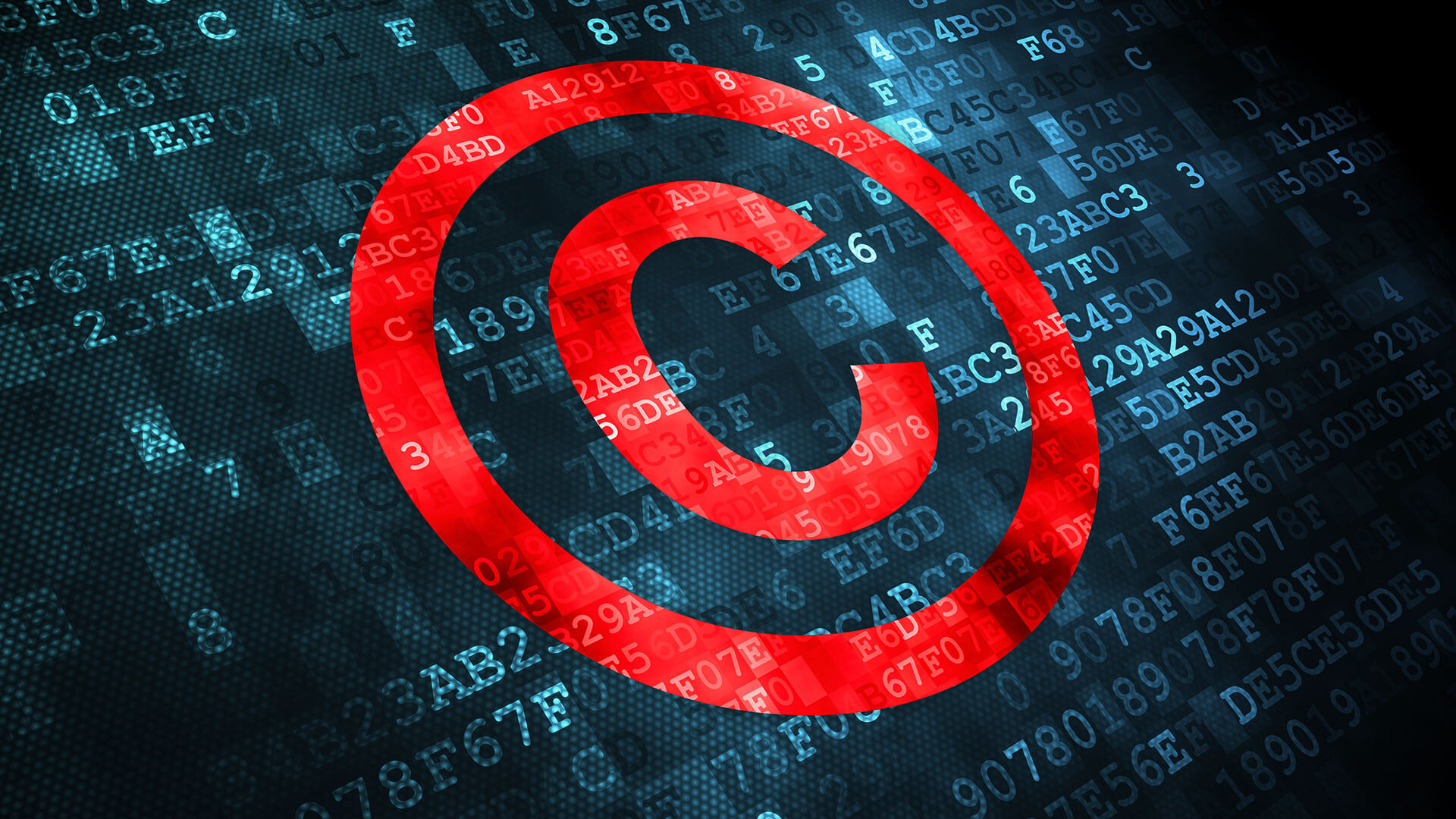 Image search engine optimization (SEO) is the practice of optimizing attributes associated with images.
Image search engine optimization (SEO) is the practice of optimizing attributes associated with images.
The file size, file name, alt attributes, captions, XML sitemap inclusion and structured data on images all play a role in the visibility of images within search engines.
All image traffic from search took a huge hit in January of 2013, when Google decided to add the “view image” button, content providers complained of drastic traffic declines across many verticals. From a study done by Define Media Group:

These declines were even more drastic for large enterprise-level brands that had spent considerable effort optimizing their image catalogs, content management system (CMS), captions and eXtensible markup language (XML) sitemaps for the search engines.
This decline was due to searchers who clicked “view image” being sent to a page with only the image asset and not to the site hosting or licensing the image when using Google image search.
Getty bites back
Approximately three years after Google added the “view image” button, Getty images filed an anti-competition complaint with the European Commission (EC) against the search giant. The gist of the complaint was that Google was using Getty images in a way that was diverting users from Getty’s website.
Fast forward to February 14, 2018 (Valentine’s Day), and it appears that Google blinked.
Google had reversed their stance and as of February 15, 2018, removed the “view image” button. A message from Google SearchLiaison tweeted confirmation that these changes (view images) came about due to the settlement with Getty Images.

Image SEO rises again
It has been fewer than 90 days since Google made the change, and I was chomping at the bit to see just how immediate the effects would be. I reached out to a number of different properties across different worldwide verticals and asked them to share their Google image traffic data.
The response to my data requests was very positive. Overall, I compiled the percentage increases from 58 different properties worldwide.
These increases were from Google images pre- and post-February 14, 2018. All sites fell into one of three different verticals, entertainment, photography and news, with a large majority being news-oriented. All sites surveyed have significantly large catalogs of images (over 100,000).
Since the only number reported from all sites was a percentage increase in image traffic from Google, it was the only number I could properly find the mean increase for at this time.
The overall data from the 58 different sites, shows an average of a 37 percent increase in clicks from Google image search.
In the image traffic data below, we can see how a single enterprise-sized entertainment site with millions of images spiked for approximately an additional 600,000 visitors from Google images every month. While this was on the higher end of the mean increase, the 47 percent seen below is pretty indicative of how most saw their traffic increase post-Valentine’s Day, with some variations.
Take note of how the impressions and position remain relatively unchanged, while the click-through rate (CTR) and clicks spike:

Some properties were generous enough to go on the record with the increases they have witnessed.
Dylan Howell from Stocksy.com reports on their Google traffic on over 1 million images after the change:
Serban Enache, CEO of Dreamstime, reports that his company’s traffic from Google images increased by approximately 30 percent to their catalog of 75 million images. He added:
Both Stocksy and Dreamstime commented that the changes were “positive” for both site owners and photographers. As a content creator and a firsthand witness to the traffic devastation for some clients, I wholeheartedly agree with them.
Some users of image search were surprisingly upset at the change and within a week, Chrome extensions were popping up in the Chrome web store which promised to return the “view image” functionality for those who want it. I don’t quite understand the need for the button, since right-click functionality still exists to open images in a new tab, but I guess I am just old-school.
Can what was lost be fully regained?
If many sites lost 70 percent of their image search traffic in 2013, why aren’t we seeing similar increases? It is anyone’s guess, but could be, in part, from other engines (Bing, DuckDuckGo) still using the “view image” functionality. From Duck Duck Go:

In addition, I have seen a reluctance from many clients to spend resources on image optimization post-2013. They just didn’t feel that the benefit or traffic would be worth the resource cost. This lack of attention or resources placed into image optimization could have stunted the rebound as well.
One thing is for certain. It is time to reprioritize image SEO in-house or for clients taking a lackadaisical approach to optimizing images in the wake of the 2013 Google change. The upside will be far greater for those who are already poised to benefit from the changes.
Contributing authors are invited to create content for Search Engine Land and are chosen for their expertise and contribution to the search community. Our contributors work under the oversight of the editorial staff and contributions are checked for quality and relevance to our readers. The opinions they express are their own.



